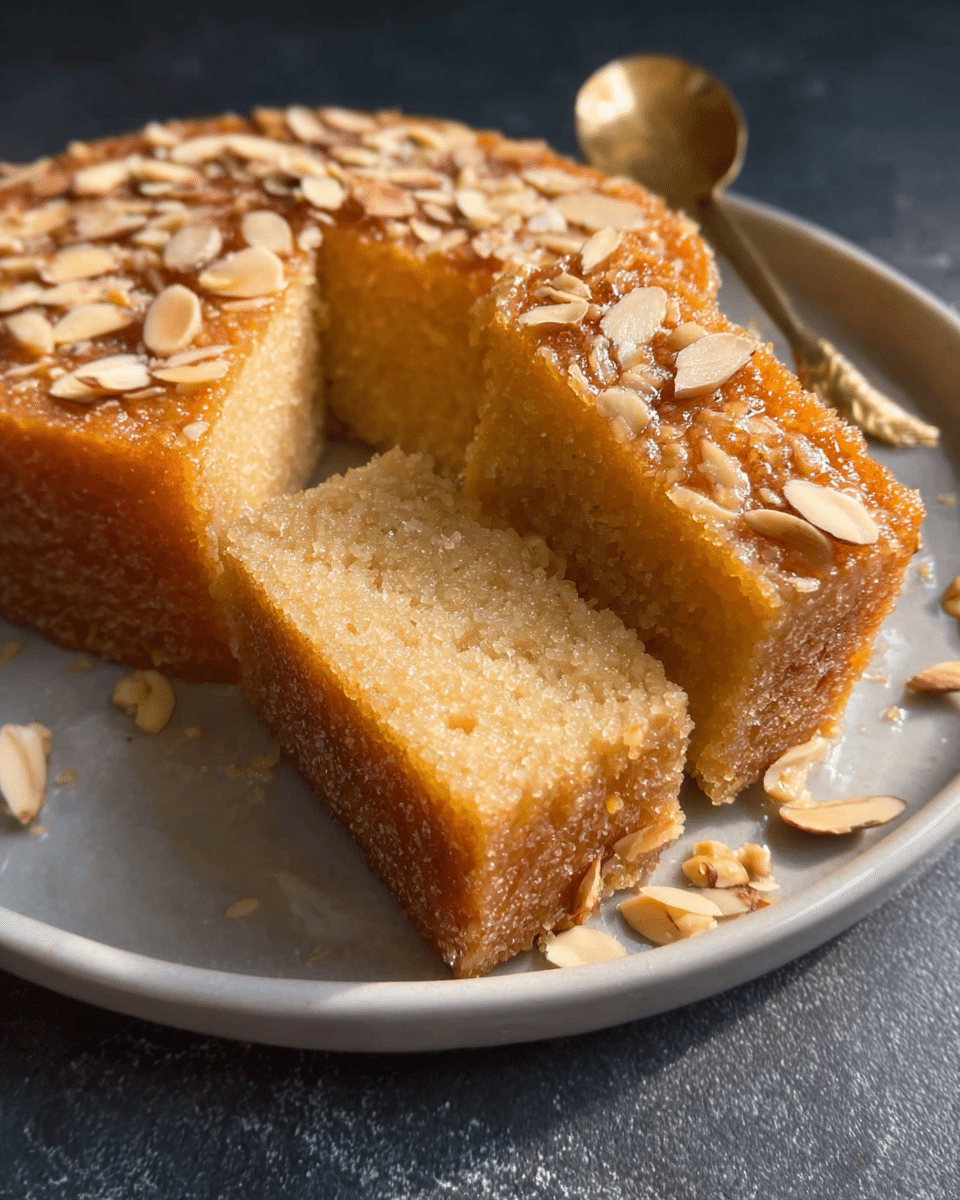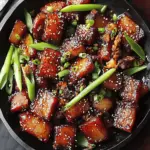The Cultural Roots of Semolina Cake
Semolina Cake, or Halva, has a rich cultural history that traces back thousands of years. The origins of Halva are believed to be in the Middle East, where it is enjoyed in various forms across countries such as Turkey, Iran, and Egypt. Over the centuries, the recipe spread across the Mediterranean region, with each culture adding its own spin on the dessert. In some regions, it is made with nuts or dried fruits, while in others, it is flavored with spices like cinnamon or saffron. Despite the variations in ingredients, the core concept of Halva has remained largely the same: a grain-based dessert, often sweetened with syrup and flavored with fat, that offers a dense, rich, and satisfying bite. This dessert is not only a treat for special occasions but also an integral part of the culinary heritage of many cultures.
The Importance of Semolina in the Cake
Semolina, the key ingredient in this cake, is a coarser form of wheat flour that gives the cake its unique texture. It is made from the endosperm of durum wheat and is often used in pasta, bread, and desserts like this one. In Semolina Cake, the semolina is toasted in oil until golden, which imparts a nutty flavor and enhances the texture of the cake. The toasting process also deepens the flavor, providing a warm, roasted taste that complements the sweetness of the syrup. Semolina’s natural grainy texture is softened when combined with the syrup, giving the cake its characteristic consistency: slightly crumbly yet moist and tender. The use of semolina in this dessert makes it a great alternative to flour-based cakes, offering a delightful chewiness and a more substantial bite.
The Role of Oil in the Recipe
Oil plays a crucial role in this dessert, as it helps to toast the semolina and create a rich, smooth texture. The oil used in Semolina Cake is typically a neutral oil such as avocado oil, though variations may use ghee or butter for a richer flavor. The oil not only adds to the richness of the cake but also ensures that the semolina toasts evenly without sticking to the pan. The oil combines with the semolina to create a moist crumb, which contrasts beautifully with the firm texture of the syrup-soaked semolina. The choice of oil is important, as it can influence the flavor and the texture of the final cake. For example, using a more flavorful oil like olive oil or ghee can infuse the cake with additional depth, making it even more indulgent.
The Simple Syrup: Sweetness and Balance
A defining characteristic of Semolina Cake is the sweet syrup that binds the toasted semolina together, infusing it with a luscious sweetness. The syrup is made by combining water, sugar, and optionally a slice of lemon. The lemon adds a subtle tartness that balances the sweetness of the sugar, preventing the cake from becoming overly sugary. The syrup is poured over the toasted semolina, where it is absorbed, softening the grains and allowing the flavors to meld. The syrup also helps to create the dense yet moist texture that makes Semolina Cake so unique. Once the syrup is absorbed, the semolina begins to pull away from the sides of the pan, indicating that it has absorbed enough liquid and is ready to be pressed into a mold. The simple syrup acts as the binding agent in this dessert, unifying the toasted semolina and creating a cohesive and flavorful cake.
Toasting the Semolina: Achieving the Perfect Flavor
The process of toasting the semolina is one of the most important steps in making Semolina Cake. As the semolina is stirred in hot oil, it gradually turns golden brown, and its natural nutty flavor is enhanced. This toasting process is key to developing the cake’s distinctive flavor and texture. It’s important to be patient during this step and to stir the semolina regularly to ensure even browning. The semolina should be toasted until it reaches a light golden color, but care should be taken not to overcook it, as it can easily burn and become bitter. The toasted semolina provides a rich, warm flavor that serves as the perfect base for the sweet syrup. This toasted graininess, paired with the sweetness of the syrup, creates a delightful contrast that is one of the reasons Semolina Cake is so cherished.
Pressing and Shaping the Cake
Once the semolina mixture has absorbed the syrup, it is transferred into a mold, typically a loaf pan or a square baking dish. The mixture is then pressed down firmly to ensure that it sets into a dense, cohesive cake. Pressing the semolina mixture is an essential step, as it helps to compact the grains and ensures the cake holds its shape when served. After pressing the mixture into the mold, the cake is left to cool for about an hour. This cooling time allows the semolina to firm up and makes it easier to slice and serve. The pressing step also helps to distribute the syrup evenly throughout the cake, ensuring that each slice is flavorful and moist.
Garnishing the Cake: A Final Touch
To finish off the Semolina Cake, it is often garnished with sliced almonds, which add a crunchy texture and a nutty flavor that complements the richness of the semolina and syrup. The sliced almonds can be pressed lightly into the top of the cake before it cools or sprinkled on top just before serving. In some variations of the recipe, ground cinnamon is also dusted on top, adding an aromatic spiciness that elevates the flavor profile. Garnishing the cake with almonds and spices not only enhances its visual appeal but also adds a layer of texture that contrasts nicely with the smoothness of the semolina.
Serving and Enjoying Semolina Cake
Semolina Cake is traditionally served as a dessert or as part of a larger meal during special occasions and celebrations. It can be served warm or at room temperature, and its dense, moist texture makes it the perfect treat alongside a cup of tea or coffee. The cake’s unique texture—rich, nutty, and slightly crumbly—makes it a satisfying dessert that pairs well with a variety of beverages. In many cultures, Halva is enjoyed as a sweet snack or a dessert to share with friends and family. Its simplicity and versatility make it a perfect option for any occasion, whether it’s a casual family dinner or a festive gathering. The best part is that Semolina Cake’s flavor improves over time, so any leftovers will continue to develop depth, making it just as delicious the next day.
Conclusion
Semolina Cake (Halva) is a dessert that combines simplicity with depth of flavor. Its nutty, toasted semolina base, sweet syrup, and optional garnishes make it a unique and satisfying treat that has stood the test of time across Mediterranean and Middle Eastern cultures. The easy-to-make recipe, using just a few ingredients, allows anyone to enjoy this rich, comforting dessert at home. Whether served at a gathering or enjoyed during a quiet tea time, Semolina Cake brings a touch of tradition and warmth to any table. Its rich flavor, satisfying texture, and simple preparation make it a timeless classic that continues to delight those who try it.






